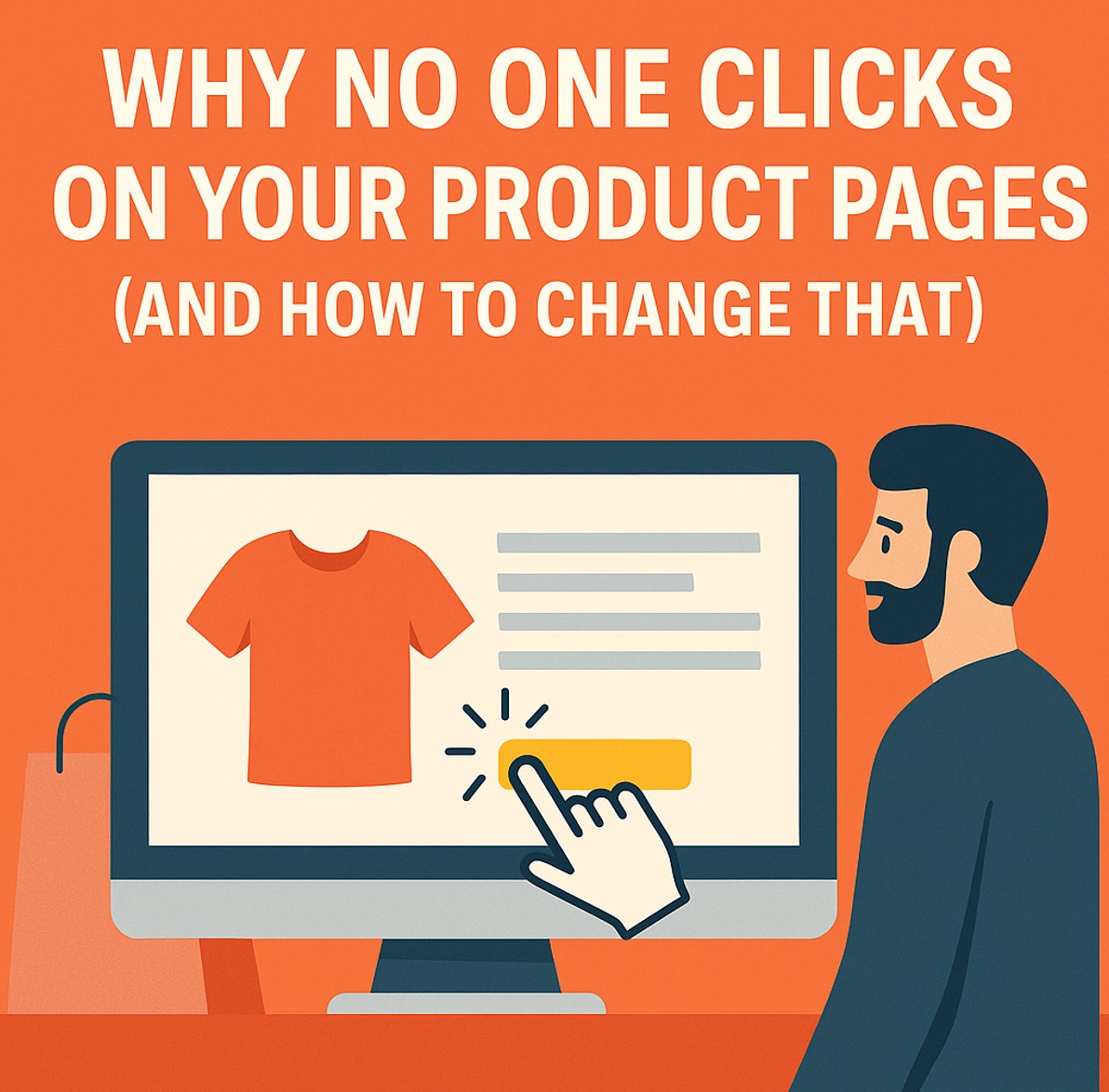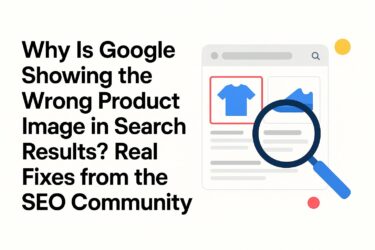Let’s be honest: you’ve put a lot of work into your product pages. You’ve written descriptions, added nice images, maybe even sprinkled in a few SEO keywords. But when you check your analytics, the clicks just aren’t coming in. It’s frustrating. You know your products are solid. So why is no one biting?
Here’s the uncomfortable truth: your product pages probably aren’t the problem. The real issue is they’re not getting clicked on in the first place.
In this article, we’re digging into why your product pages are being ignored in search—and what you can do to turn that around.
The Problem Starts in the SERPs
Most of the time, we talk about SEO in terms of rankings. And sure, being on page one matters. But what happens after you get there? CTR—click-through rate—is just as important.
Think of it like this: Google shows your page to 1,000 people. Only 20 click. That’s a 2% CTR. Not great. Especially if the people ranking just above or below you are pulling in 5% or 10%.
Google notices that. And over time, a low CTR can hurt your rankings too.
So what makes someone scroll right past your product page in search results? Let’s break it down.
Your Titles Are Flat
This one’s a biggie. Your title tag (the clickable blue link in Google) is your first impression. And far too many product pages use titles like:
“Mens Black Leather Shoes | Product ID 1234 | Brand Name”
Useful? Kind of. Compelling? Not at all.
Compare that to something like:
“Stylish Black Leather Shoes for Men – Free Delivery & Easy Returns”
The second one actually tells me what I’m getting—and it gives me a reason to click.
What to do instead:
- Focus on benefits, not just features.
- Use action words: discover, shop, explore, save.
- Include value-adds: free shipping, discounts, quick delivery.
Meta Descriptions That Don’t Sell
We all know meta descriptions don’t directly impact rankings. But they absolutely influence clicks. And yet, many product pages either auto-generate them or forget them entirely.
That’s a missed opportunity.
Think of your meta description like a tiny ad. You have 150-160 characters to convince someone your page is worth visiting. Use that space to answer the question: “Why should I care?”
Bad example: “Buy Mens Leather Shoes online at best prices. Quality assured.”
Better example: “Step up your look with handcrafted leather shoes—free delivery, 30-day returns, and sizes that fit just right.”
Small tweak. Big difference.
Your Snippet Looks Like Everyone Else’s
If your page title and meta look exactly like five other stores selling the same product, you’re going to blend right in—and probably get ignored.
The way to fix this is simple: stop copying manufacturer descriptions or titles. Add personality. Be specific. Mention what makes your product or store better.
And if you can, enhance your snippet with structured data.
Rich Results Can Make or Break You
If you’re not using product schema, you’re missing out. Structured data lets you add extra info right into your search snippet—like pricing, reviews, stock status, and more.
This makes your snippet bigger, richer, and more clickable.
You’ve seen it before: ⭐ 4.7 (129 reviews) | £89.00 | In stock
Those stars and numbers make a difference. In competitive SERPs, they can be the deciding factor between your result and someone else’s.
You can implement schema manually, but plugins like Rank Math or WooCommerce SEO make it easy. Just make sure it’s showing up correctly by testing with Google’s Rich Results tool.
Your URLs Look… Weird
Sometimes, your URL can hurt your CTR. It’s subtle, but a long, messy link like:
www.yoursite.com/store/product?id=4829&cat=shoes-leather
…doesn’t exactly inspire confidence.
Clean, readable URLs help build trust. They show that your site is well-organised and user-friendly.
Try to aim for something like:
www.yoursite.com/mens/black-leather-shoes
It’s descriptive, friendly, and easier to read on mobile.
The Preview Image Isn’t Eye-Catching
This one applies more to social shares or Google Discover, but it’s worth noting: the featured image that shows up alongside your link matters. If it’s low-res, poorly cropped, or just plain boring, people will scroll past it.
Use high-quality, well-lit images that showcase the product in use. Lifestyle photos often work better than plain product shots.
You’re Ranking for the Wrong Queries
Sometimes your page is optimised for a term that doesn’t match user intent. Maybe you’re ranking for “best leather shoes UK” when your page is about one specific pair, not a comparison or review.
In that case, even if people see your page, they won’t click—because it’s not what they’re looking for.
Revisit your keyword targeting. Ask: Is this keyword commercial? Informational? Is my page the best answer for it?
Small Adjustments, Big Wins
You don’t have to overhaul your entire site to improve CTR. Often, it’s a few small changes:
- Rewrite your title tags with benefits and curiosity
- Add compelling, benefit-driven meta descriptions
- Use structured data to enhance snippets
- Target the right keywords
- Add unique selling points that stand out
These tweaks won’t just bring more clicks—they’ll bring better clicks. Visitors who are actually interested. Visitors who convert.
And that’s what it’s all about, right?
If your product pages aren’t pulling their weight—and you’re not sure where to start—let’s fix that. At Algo Digital, we specialise in SEO that makes product pages work harder. From technical audits to conversion-focused content, we help eCommerce businesses (like yours) get more clicks, more visitors, and more sales.
Book a free discovery call today at algodigital.co.uk. Let’s make sure your best products actually get seen—and clicked.



